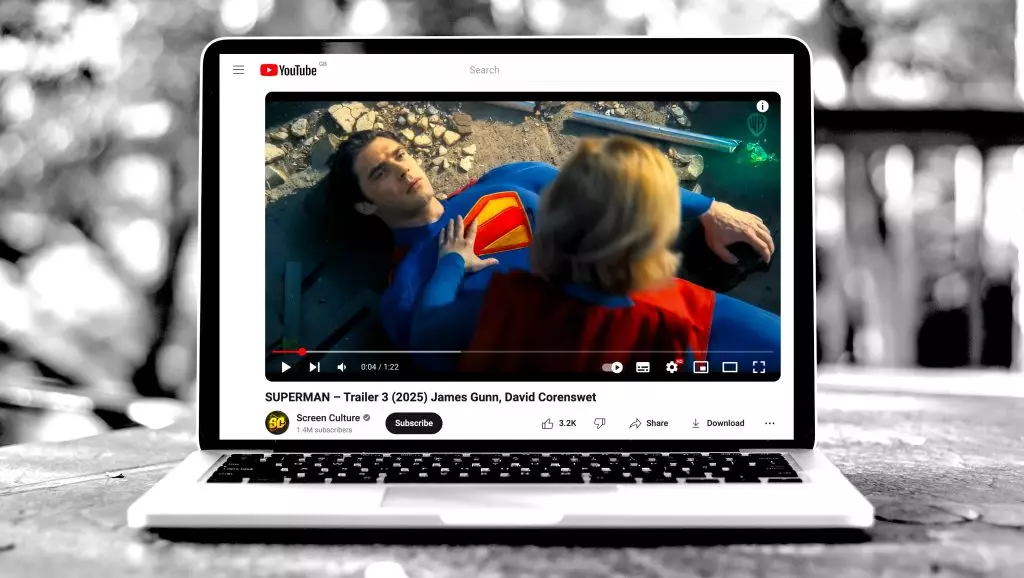The digital landscape is a fertile ground for creativity, but occasionally, it breeds questionable practices. Recently, YouTube put a significant spotlight on the rampant rise of AI-generated movie trailers. With the advent of artificial intelligence, several channels have emerged that cleverly fabricate trailers based on popular film franchises. These channels, notably Screen Culture and KH Studio, have found elaborate ways to tantalize viewers with imaginative twists on beloved stories. While the allure of their output can be hard to resist, the ethical implications of their content raise serious concerns.
Screen Culture, for instance, has gained immense traction by crafting trailers that mimic official promotional material but include AI-generated elements, promising viewers an intriguing glimpse into “what could be.” Similarly, KH Studio presents a more audacious approach, producing tongue-in-cheek interpretations of well-known titles, such as a fantastical James Bond movie featuring a dream team of A-list actors. However, manipulating these beloved narratives without authorization has led to significant controversy, as many creators tread a fine line between homage and infringement.
YouTube’s Response to Controversy
In a bold move, YouTube has taken action against these channels, revoking their monetization capabilities after a detailed investigation by Deadline. This decision underscores the platform’s commitment to protecting intellectual property rights and reinforcing its policies against misinformation. YouTube’s monetization guidelines are explicit: creators are expected to significantly transform materials that they borrow, steering clear of content aimed solely at garnering views. The contradiction lies in the way the algorithm promotes this murky content, raising questions about the platform’s responsibility in fostering ethical practices.
Despite the crackdown, the founders of Screen Culture and KH Studio express their frustration at being labeled as misleading. They argue that their goal has never been to impersonate authentic content but rather to spark conversation and imagination among viewers. KH Studio’s founder emphasized the creative intent behind their videos, which strive to explore novel cinematic possibilities rather than present false narratives. The challenge lies in reconciling artistic innovation with adherence to copyright principles—a delicate balance that digital creators must navigate in this evolving content landscape.
The Marketing Implications
This saga poses an intriguing question: can creativity exist without boundaries? The channels attracted a massive audience, amassing billions of views, causing some industry players to take notice. Instead of outright condemnation, several major Hollywood studios are reportedly seeking to channel the ad revenue generated by these creative yet controversial videos, thus complicating the discourse surrounding ownership and artistic expression. This strategy appears duplicitous—while studios aim to profit, they simultaneously repress the exploration of new content forms that these creators represent.
The problem extends beyond individual channels, encompassing a broader discussion on AI’s role in content creation. As filmmakers, studios, and internet creators grapple with the implications of AI-driven narratives, it begs the question: will the traditional structures of content creation evolve to accommodate this technological revolution, or will they fight to preserve their established authority?
The Audience’s Role
At the heart of the issue lies the audience’s appetite for innovation. Viewers’ engagement with AI-generated trailers reflects a broader cultural shift towards seeking fresh experiences, often embracing the unconventional. However, this fascination also presents a danger: what happens when the line between fact and fiction becomes blurred? As consumers, it is crucial for audiences to adopt a discerning perspective, acknowledging the balance between entertainment and authenticity in digital media.
As enthusiasts of cinema and storytelling, viewers must demand accountability from platforms hosting such content. Distinguishing between authentic trailers and imaginative reinterpretations allows for a healthier, more transparent media environment—where creativity flourishes without infringing on the rights of original creators. The emergence of these AI-driven channels points to a possible future where the boundaries of traditional content creation expand, but only if they abide by ethical and legal standards.
Understanding these dynamics is essential in shaping the future of digital entertainment. The interaction between creators, studios, and audiences must evolve, ushering in a new era that values innovation while respecting the foundations of creativity upon which the industry is built.
